Research
My research lies at the intersection of physical oceanography, numerical modeling, and machine learning. Current and past research projects include:
- Machine learning for hybrid climate modeling
- Ocean mesoscale eddies
- North Atlantic ocean circulation
- Uncertainty quantification & observing system design
- Development of open source software tools
Machine Learning for Hybrid Climate Modeling
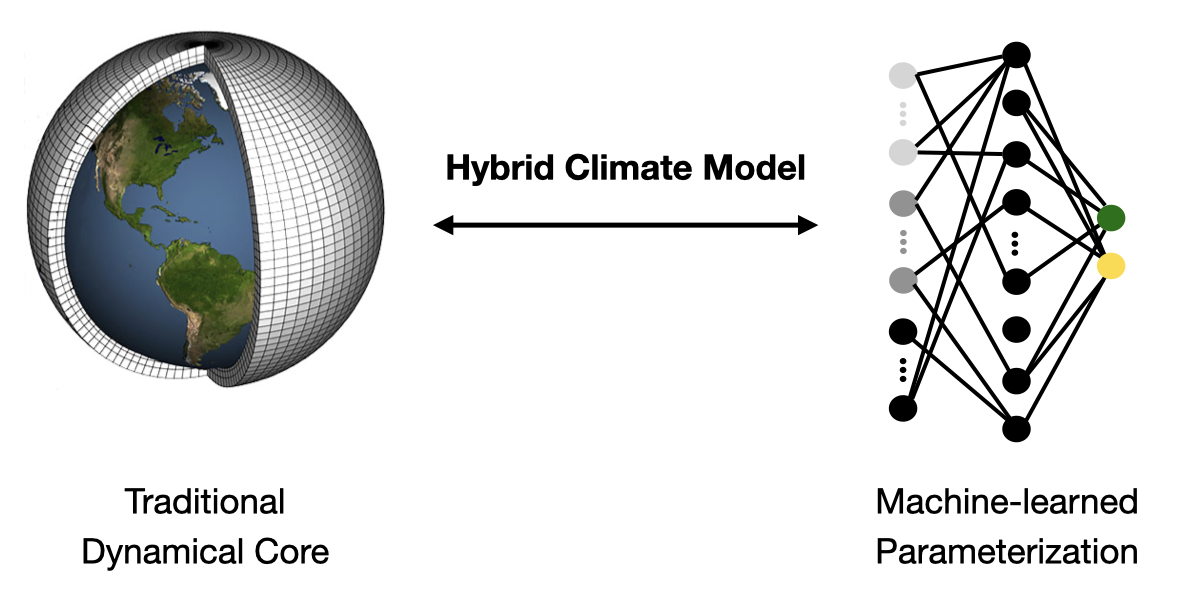
Hybrid climate modeling, which combines machine-learned (ML) parameterizations with a climate model’s traditional dynamical core, is an exciting research field. I specialize in hybrid ocean modeling using both offline and online approaches. The key difference between these approaches is how the ML model is trained:
- Offline learning: The ML model is trained on precomputed data from high-resolution simulations before being implemented in the model.
- Online learning: The ML model is trained concurrently during the full climate simulation, requiring the underlying physical model to be differentiable.
During my work with the M2LInES Team, I focused on offline approaches to hybrid modeling. I began by diagnosing eddy fluxes from high-resolution MOM6 simulations using filtering and coarse-graining techniques. I then trained ML models on these offline datasets using PyTorch. To evaluate the model’s performance in an online setting, I integrated it into the MOM6 code base. However, offline-learned parameterizations often encounter numerical instability when coupled with the full model, highlighting the potential advantages of online approaches.
As part of the DJ4Earth project, I supervise students applying online learning techniques to improve ocean eddy parameterizations. In this approach, the machine-learned parameterization is trained alongside the simulation, requiring a differentiable ocean model with an adjoint. We implement this method using the ocean model Oceananigans, and train the ML models in Julia.
Related publications: Balwada, …, Loose et al., JOSE (2024); Yu, …, Loose et al., NeurIPS (2023)
Ocean Mesoscale Eddies
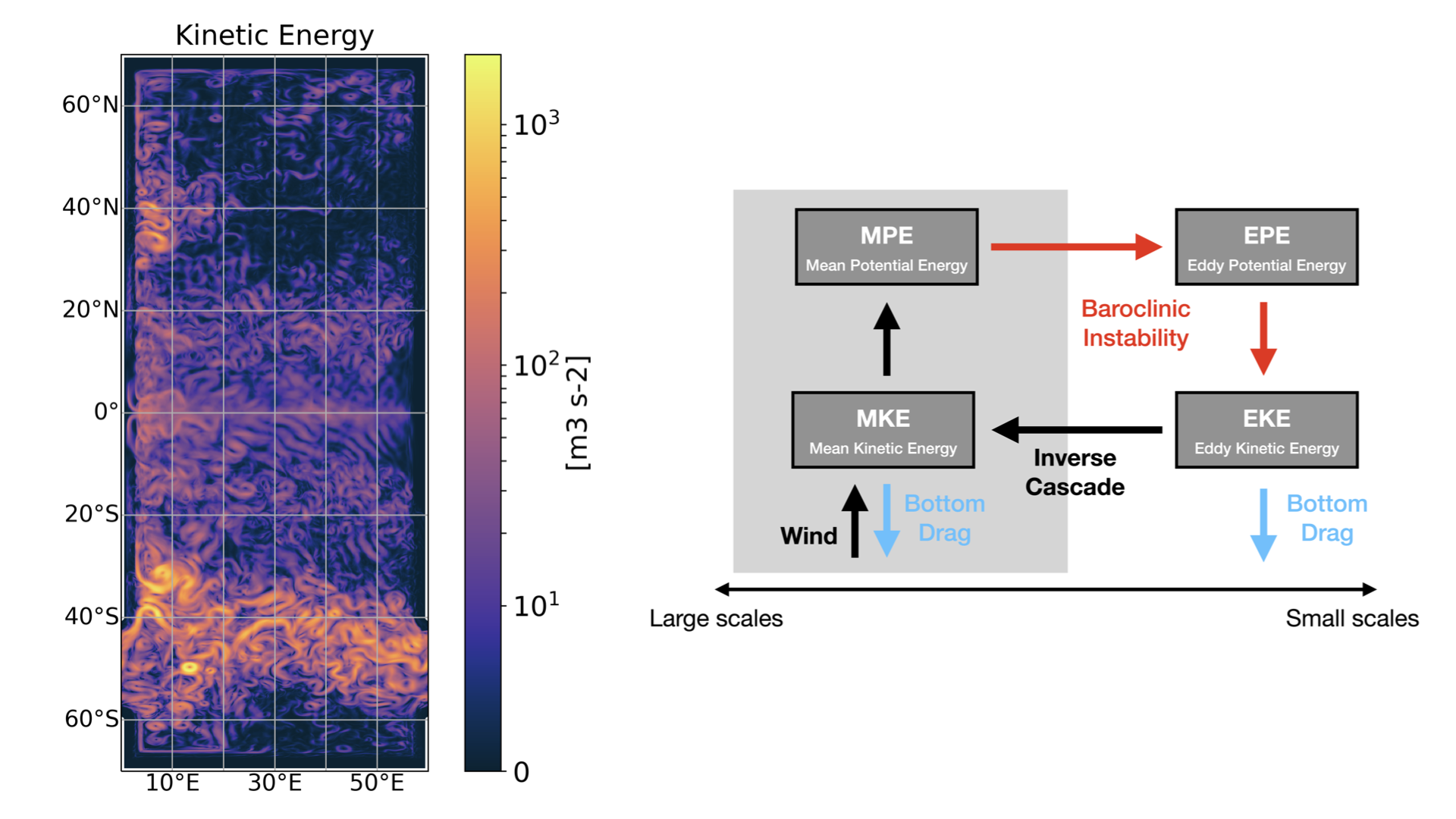
Ocean mesoscale eddies are energetic motions that have horizontal scales of tens to hundreds of kilometers. Despite their relatively small scale, these eddies play an important role in transporting momentum, heat, salt, carbon, and nutrients throughout the world’s oceans.
My research focused on the energy cycle of the ocean mesoscale eddy field – its generation, its interaction with the large-scale flow, and its dissipation. To investigate this cycle, I used high-resolution ocean models, aiming to improve the representation of mesoscale processes in global ocean models.
Additionally, I studied and compared different mesoscale eddy parameterizations—specifically, Gent & Williams (1990) and Greatbatch & Lamb (1990)—from both theoretical and numerical modeling perspectives. My research explored how these parameterizations interact with the ocean model’s vertical coordinate system, providing insights into the consistency between theoretical frameworks and numerical implementations.
Related publications: Loose et al., JPO (2022); Loose et al., JAMES (2023); Marques, Loose et al., GMD (2022).
North Atlantic Ocean Circulation
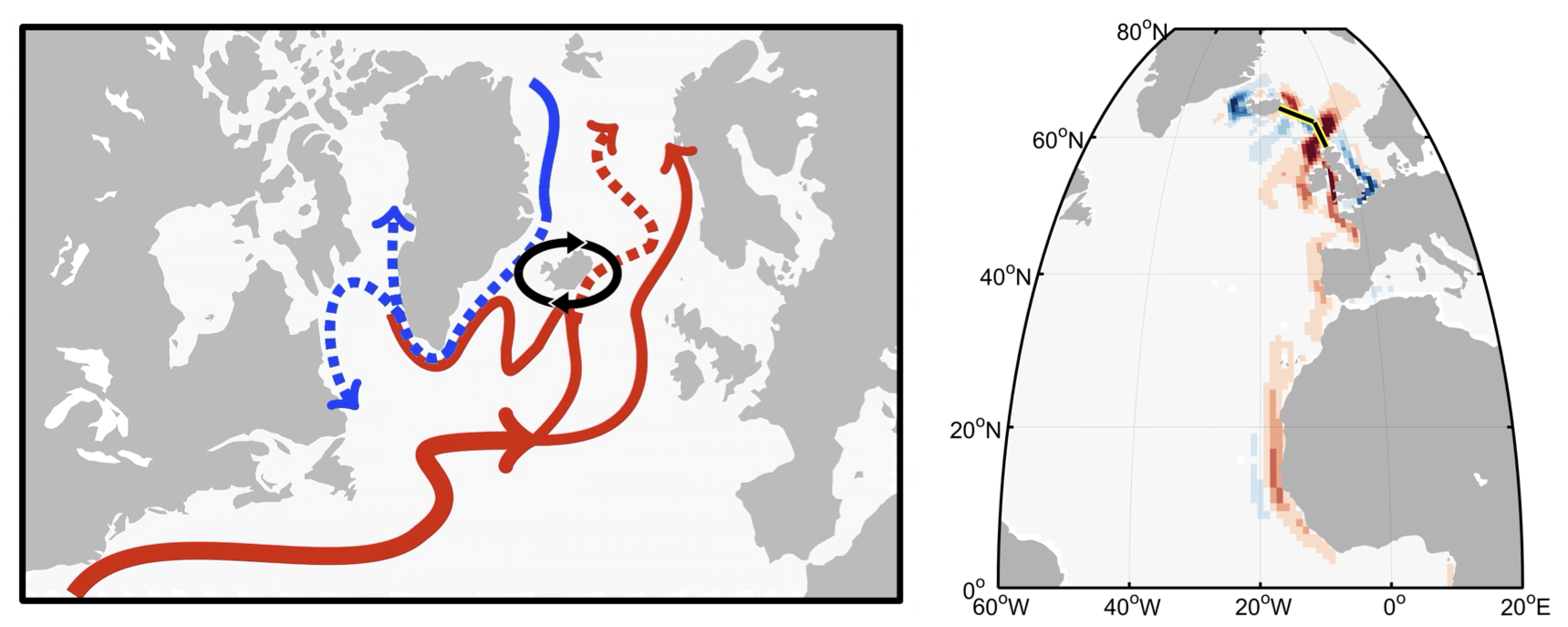
The seas around Greenland, Iceland, and Norway transport heat from the North Atlantic toward the Arctic. I used adjoint-derived sensitivities in the ECCO state estimate to identify drivers and locations that affect ocean heat transport in this region. Due to oceanic teleconnections, high-latitude heat transport is sensitive to local and remote(!) wind forcing.
Related publications: StoryMap; Loose et al., J. Geophys. Res (2020); Loose, PhD Dissertation, 2019.
Uncertainty Quantification & Observing System Design
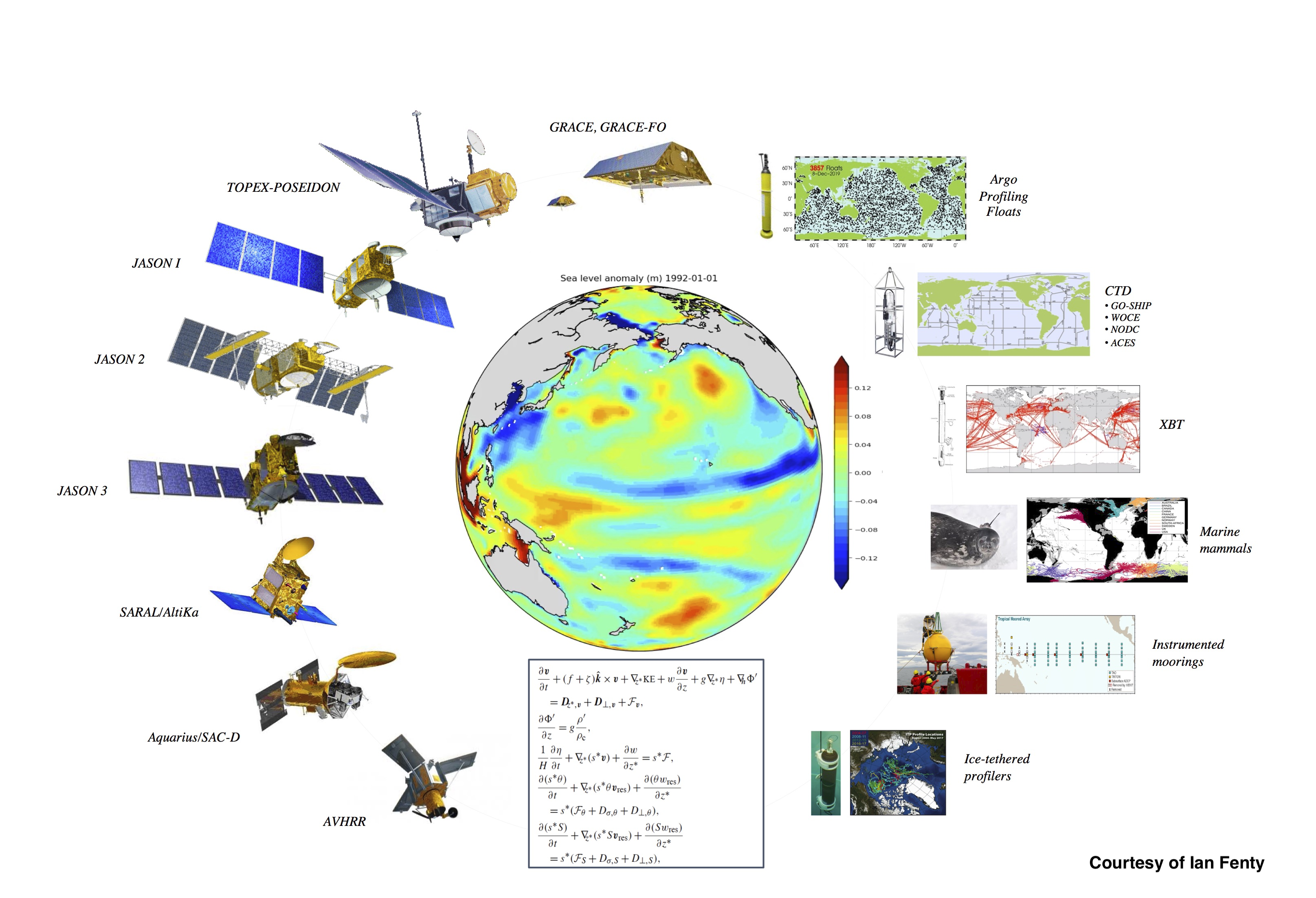
Ocean observing systems are expensive to build and maintain, and therefore have to be designed carefully. Important questions to consider include:
- What dynamical information is contained in already existing observation networks?
- What is the optimal instrument configuration, which is both cost-efficient and capable to monitor key processes and ocean variability?
To tackle these questions, I performed quantitative observing system design, through a combination of Bayesian inverse methods and uncertainty quantification in a data assimilation framework. By means of these computational tools, quantitative observing system design suggests an optimal observing strategy and supports effective instrument placements in the future.
Related publications: Loose et al., J. Geophys. Res (2020); Loose and Heimbach, JAMES (2021); Fujii et al., Front. Mar. Sci. (2019).
Development of Open Source Software Tools
I am engaged with developing open-source software tools in Python and Julia to enable our Earth Science community to perform data analysis in an efficient and reproducible way. I have led the development of two open-source Python packages: GCM-Filters and ROMS-Tools.
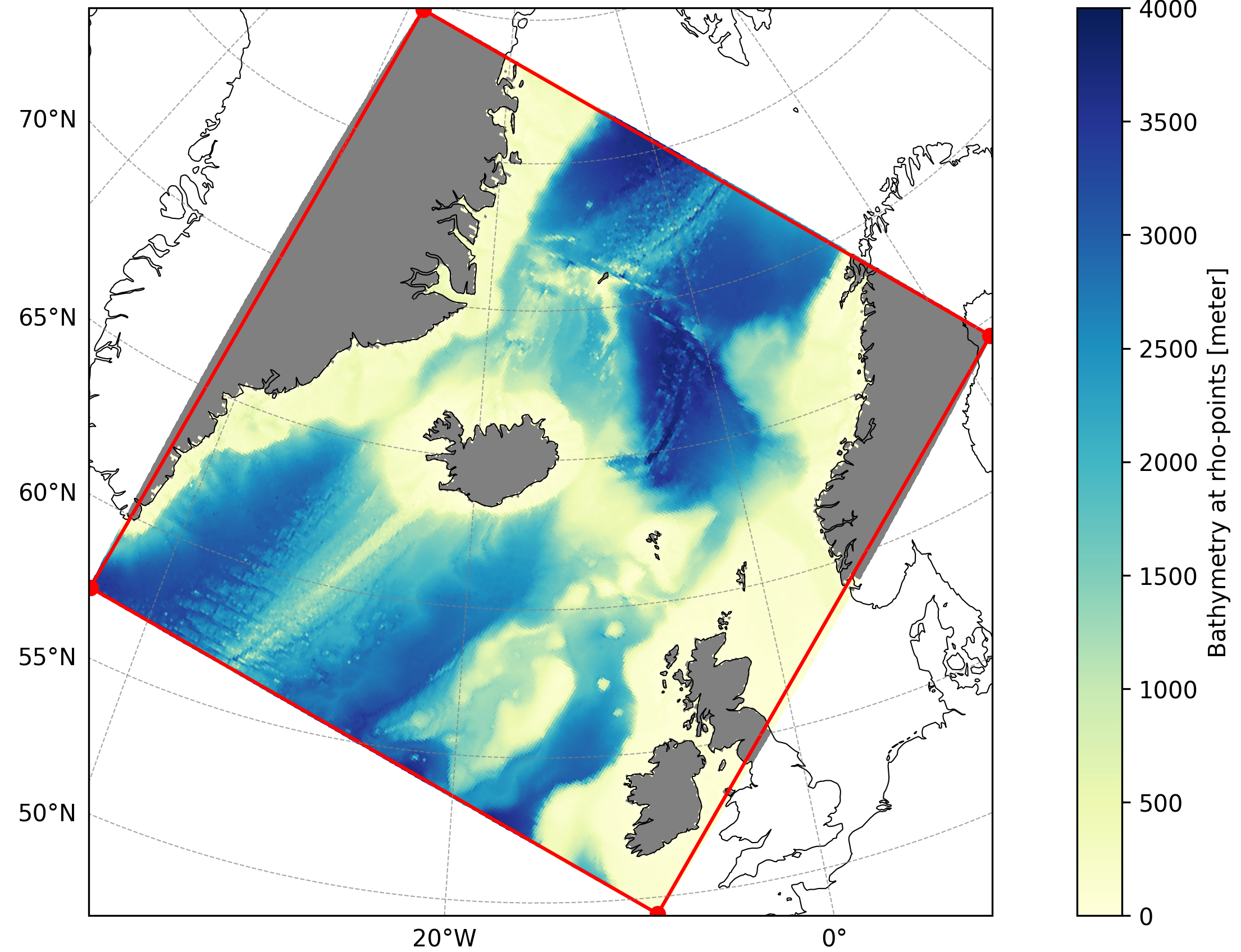
ROMS-Tools is a Python package for creating the input files that are necessary to run a ROMS simulation. This includes creating a grid, tidal, boundary, and atmospheric forcings, initial conditions, and more!
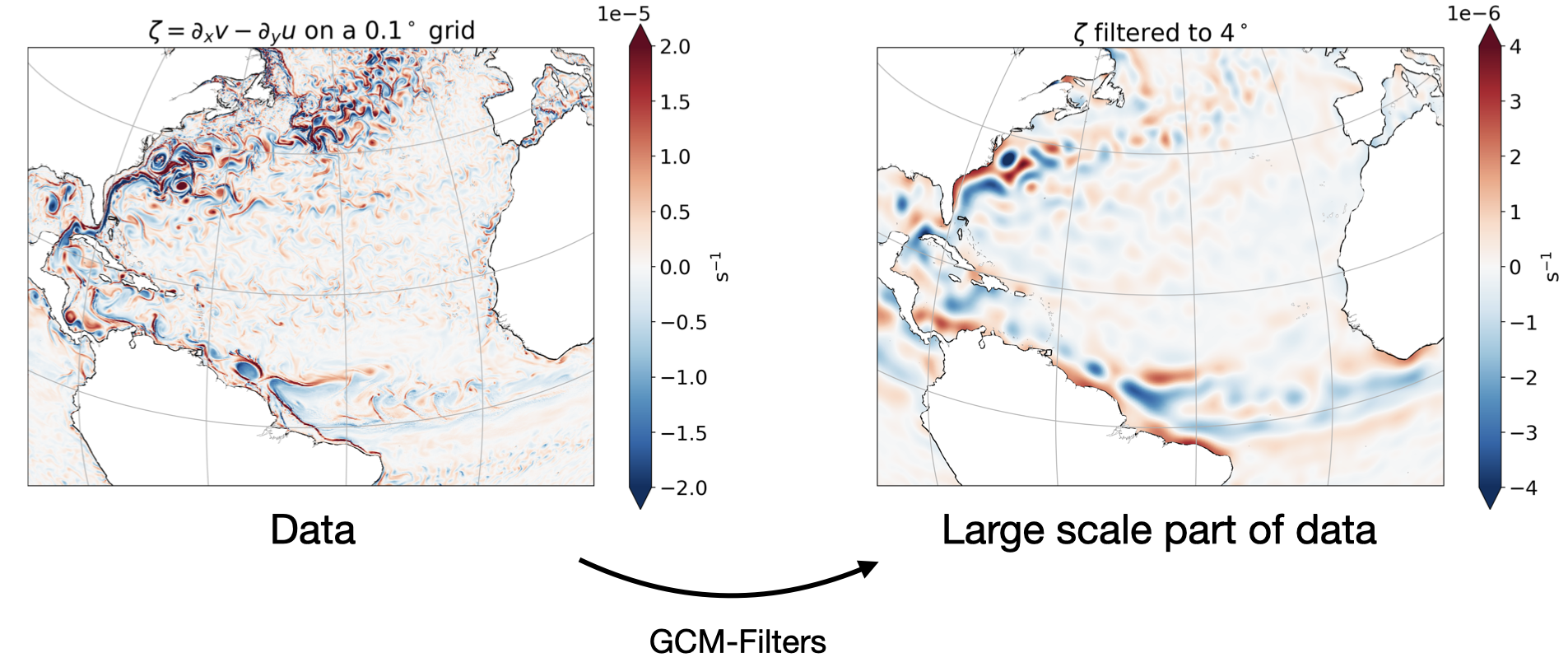
GCM-Filters is a Python package that allows scientists to perform spatial filtering analysis in an easy, flexible, efficient, and reproducible way. GCM-Filters is designed to work with gridded data that is produced by General Circulation Models (GCMs) of ocean, weather, and climate.
Check out this presentation on GCM-Filters!
Related publications: Loose et al., JOSS (2022); Grooms, Loose et al., JAMES (2021).